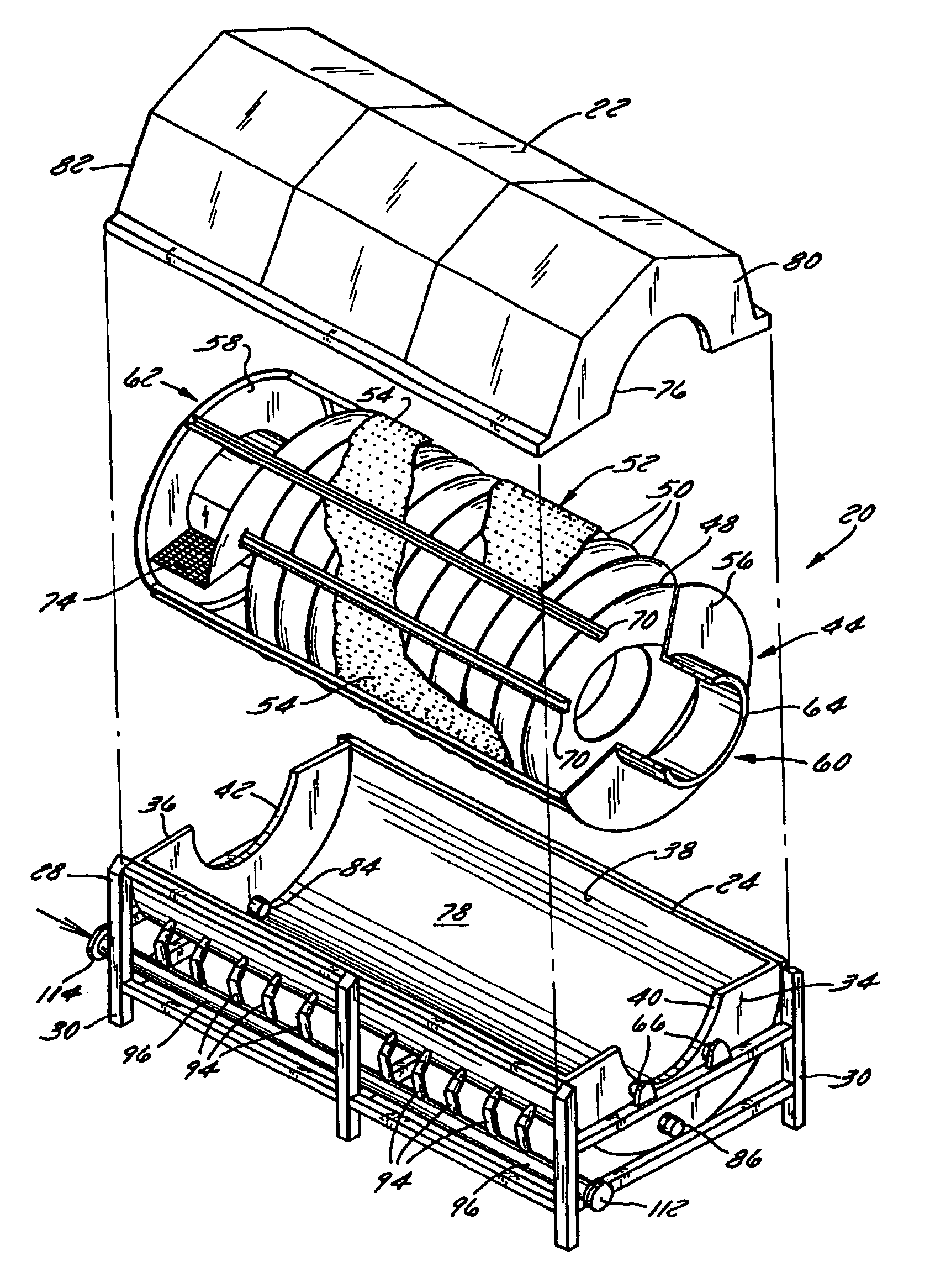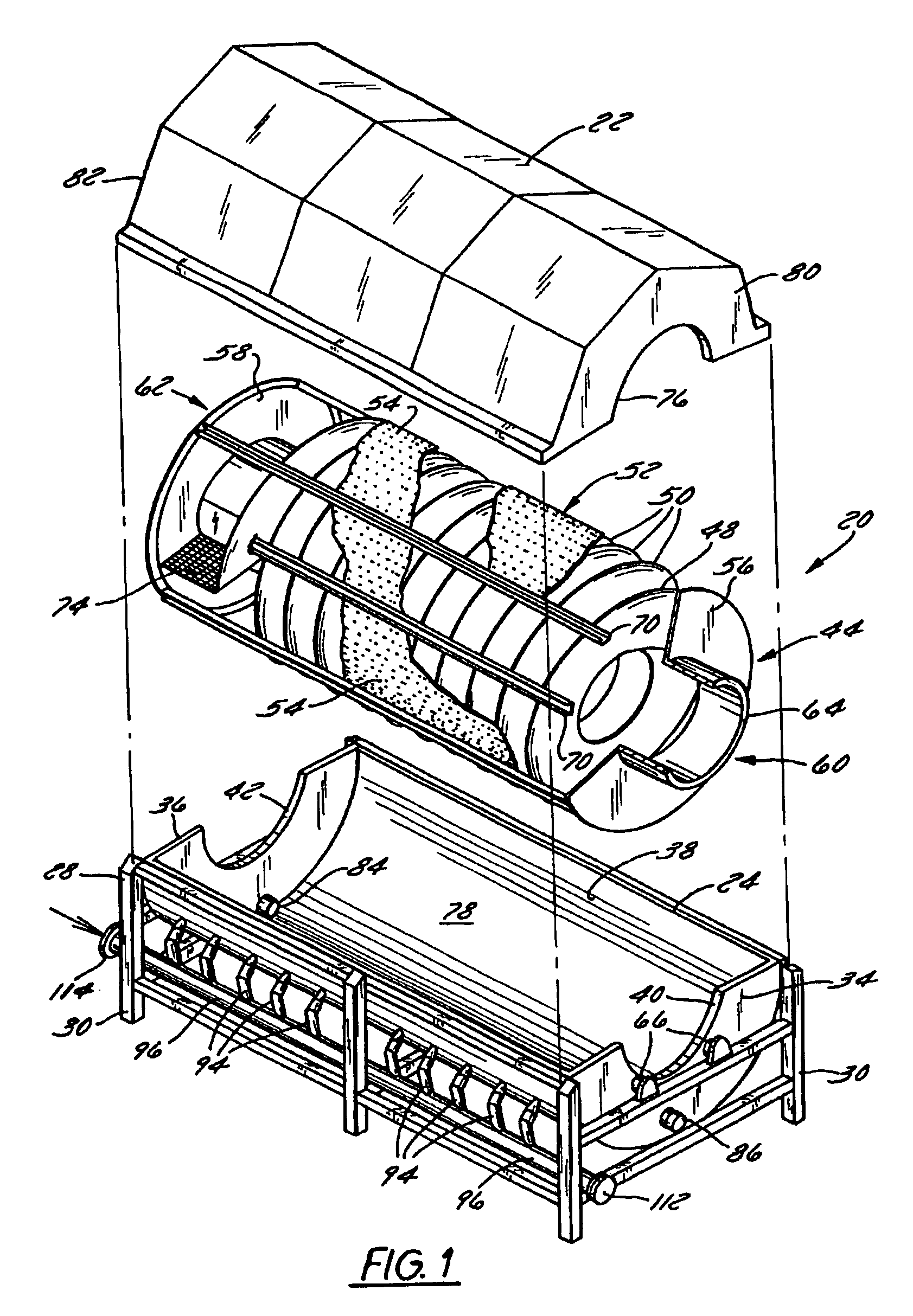Method for processing food product
a technology of food products and rotary presses, which is applied in the field of rotary presses, can solve the problems of poor heat transfer and uneven heating, the cost of bigger and more powerful pumps and other equipment needed to deliver greater flow rates, and the failure to test the greater pressure and flow rate of directed water flows, etc., to achieve the effect of increasing the amount of food products, increasing the flow rate and/or the flow rate of higher pressure directed flows
- Summary
- Abstract
- Description
- Claims
- Application Information
AI Technical Summary
Benefits of technology
Problems solved by technology
Method used
Image
Examples
Embodiment Construction
[0052]FIGS. 1-4 illustrate an exemplary rotary blancher 20 of this invention that utilizes directed flows of a fluid during operation to enhance heat transfer. As is shown more clearly in FIG. 6, the blancher 20 is comprised of a housing that includes a cover 22 that mates with a tank 24 that holds a heated fluid, that preferably is a liquid 26, which heats food products 32 during operation. The tank 24 is supported by a frame 28 that has legs 30, which rest on the floor or ground.
[0053]The tank 24, preferably made of stainless steel or another material suitable for food processing applications, has an inlet endwall 34 and an outlet endwall 36. The endwalls 34 and 36 are joined to a tank underside 38 that defines the bottom and lengthwise sides of the tank 24. The tank underside 38 may be a single, continuous, curved plate running lengthwise between endwalls 34 and 36, or may be made of several long flat plates positioned side by side and angularly joined together to form a generall...
PUM
 Login to View More
Login to View More Abstract
Description
Claims
Application Information
 Login to View More
Login to View More - R&D
- Intellectual Property
- Life Sciences
- Materials
- Tech Scout
- Unparalleled Data Quality
- Higher Quality Content
- 60% Fewer Hallucinations
Browse by: Latest US Patents, China's latest patents, Technical Efficacy Thesaurus, Application Domain, Technology Topic, Popular Technical Reports.
© 2025 PatSnap. All rights reserved.Legal|Privacy policy|Modern Slavery Act Transparency Statement|Sitemap|About US| Contact US: help@patsnap.com



